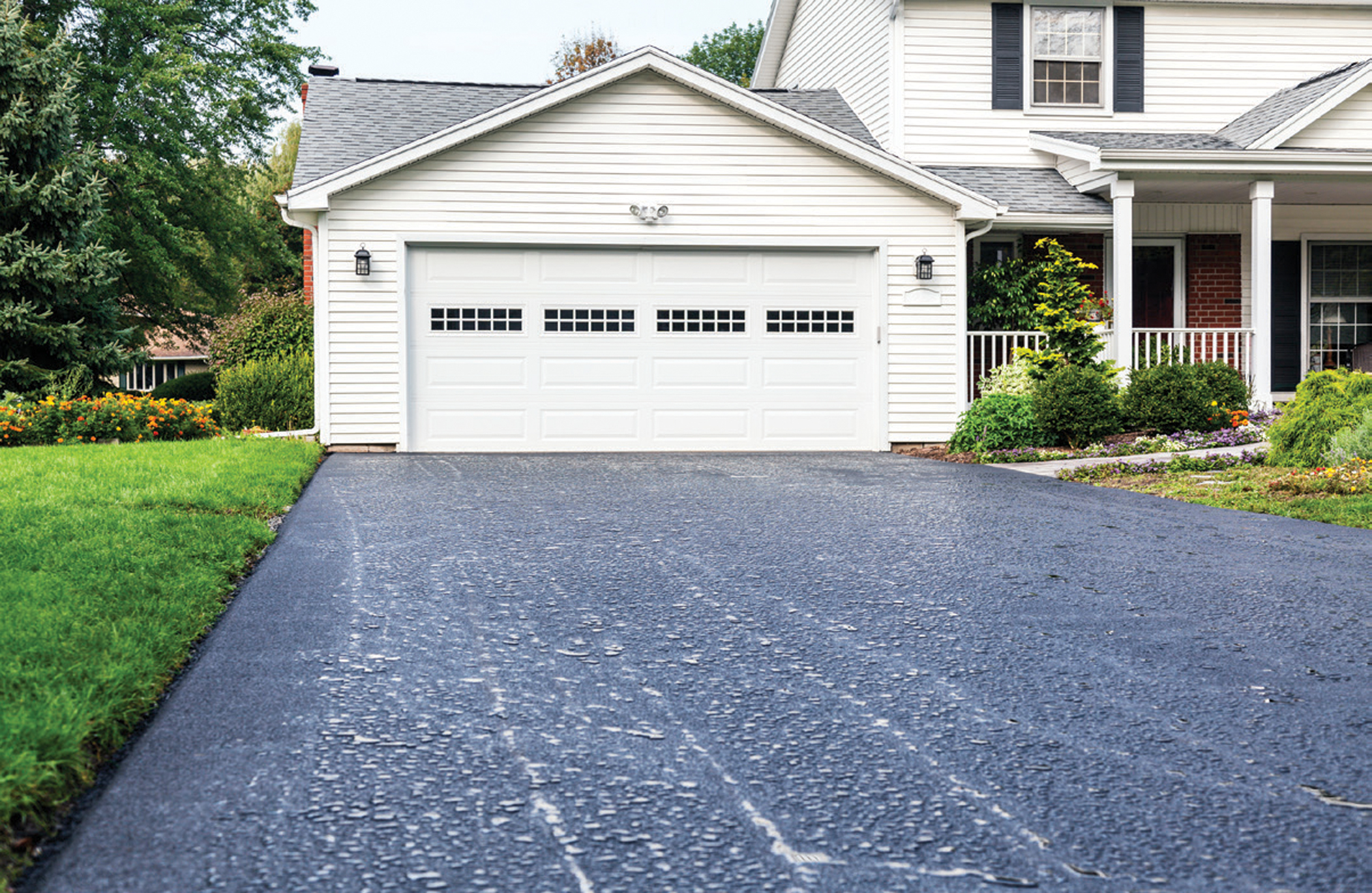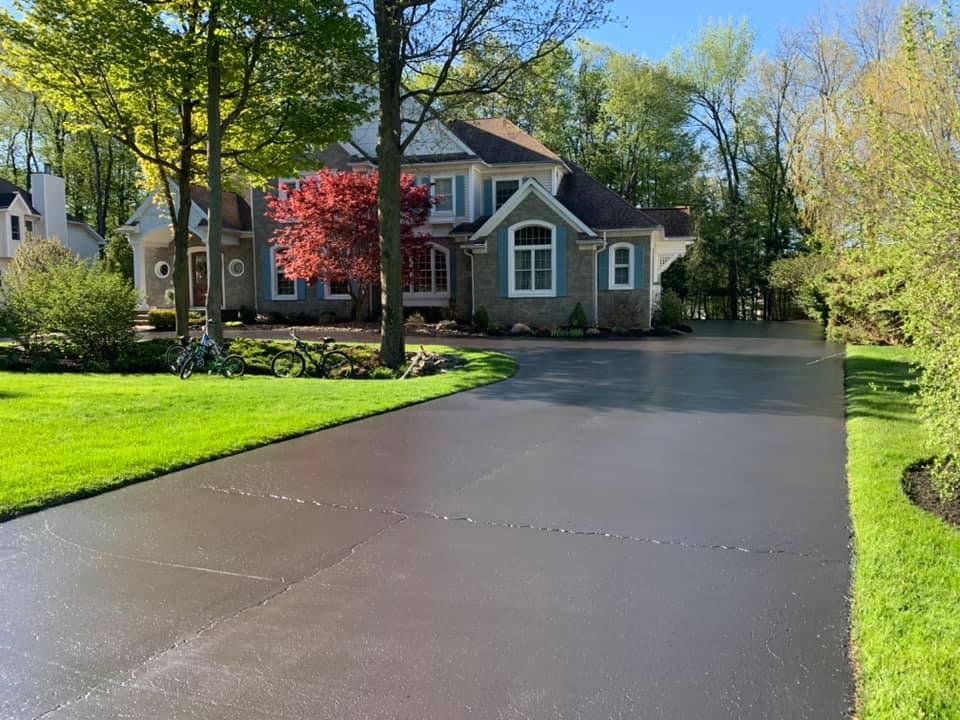Transform Your Home's Appearances: Commercial Parking Lot Leading and Asphalt Sealing Solutions
Warm Mix Asphalt: A Sustainable Remedy for Sidewalk
Warm Mix Asphalt (HMA) has actually become a leading sustainable option for sidewalk services, providing a myriad of ingenious innovations and ecological benefits. Its capacity to recycle materials and decrease energy intake offers an engaging situation for its adoption in road building and construction tasks. The lasting performance and toughness of HMA make it a preferred alternative for framework development. As the demand for environmentally friendly building practices grows, exploring the nuances of HMA's sustainability can offer useful understandings into the future of pavement solutions.
Ecological Advantages of Hot Mix Asphalt

Additionally, Hot Mix Asphalt aids to reduce metropolitan heat island impacts. Its dark color soaks up sunlight, lowering the amount of warm showed back into the environment contrasted to lighter-colored pavements. This can decrease ambient temperatures in metropolitan locations, reducing the need for air conditioning and inevitably minimizing energy intake.
Furthermore, Hot Mix Asphalt adds to boosted stormwater management. Its porous nature enables water to recharge and infiltrate the pavement groundwater products, decreasing overflow and the danger of flooding. These ecological benefits make Hot Mix Asphalt a sustainable selection for paving roads and highways.
Energy Effectiveness in HMA Manufacturing
Is power effectiveness an essential aspect in the production of Hot Mix Asphalt (HMA)? Power plays a considerable role in the production of HMA, impacting both price and environmental sustainability. One essential aspect of power effectiveness in HMA manufacturing is the usage of warm mix asphalt (WMA) modern technologies.
Moreover, developments in plant innovations have actually led to more energy-efficient HMA production procedures. By enhancing energy usage in HMA manufacturing, the industry can decrease its carbon impact while maintaining top quality pavement products.
Recyclability of Warm Mix Asphalt
The recyclability of Hot Mix Asphalt (HMA) is an essential aspect of its sustainability and long-lasting ecological influence. HMA is one of the most recycled products in the USA, with over 100 million loads of redeemed asphalt sidewalk (RAP) being reused yearly in brand-new sidewalk construction. Recycling HMA uses numerous ecological benefits, such as decreasing the requirement for virgin products, decreasing power consumption during production, and reducing the amount of waste sent out to garbage dumps.
The process of recycling HMA involves grating the existing sidewalk, crushing it into smaller pieces, and blending it with new accumulation and asphalt binder to develop a recycled mix. Generally, the recyclability of HMA plays a substantial function in promoting lasting techniques within the pavement industry.

Long-Term Efficiency of HMA
Asphalt pavements demonstrate sturdiness and strength over an extensive duration, mirroring the lasting efficiency of Warm Mix Asphalt (HMA) The longevity of HMA can be credited to its ability to endure rush hour lots, rough weather, and the effects of aging. Studies have shown that properly designed and properly constructed HMA pavements can last for twenty years or more with routine maintenance. The secret to making best use of the lasting efficiency of HMA depends on making use of high-quality materials, following finest techniques in construction, and carrying out efficient maintenance More Info methods. Correct water drainage, regular inspections, and timely fixings are important for protecting the architectural stability of HMA sidewalks over time. Additionally, developments in HMA innovation, such as the use of polymer-modified binders and warm mix asphalt, have even more enhanced the durability and long life of HMA sidewalks. By focusing on quality building and construction and upkeep methods, HMA continues to prove itself as a cost-efficient and sustainable solution for resilient pavement framework.

HMA: Resilience and Sustainability
Demonstrating both longevity and sustainability, Hot Mix Asphalt (HMA) has ended up being a cornerstone in the building and construction of lasting pavement frameworks - angled parking. HMA's durability originates from its capability to hold up against hefty lots, severe weather, and high website traffic volumes, making it a reliable option for roadways, highways, and airport terminal runways. The structure of HMA, which generally consists of accumulations, binder, and filler, plays a vital role in improving its long life and resistance to tear and use
In addition, HMA's sustainability lies in its recyclability and browse this site energy-efficient manufacturing procedure. The ability to reuse redeemed asphalt pavement (RAP) in new HMA blends lowers the demand for virgin materials and lessens the ecological impact of pavement building and construction and upkeep. Additionally, the energy effectiveness of generating HMA hinges on its lower mixing temperatures contrasted to various other sidewalk materials, resulting in minimized power intake and greenhouse gas emissions.
Conclusion
In final thought, hot mix asphalt (HMA) offers a lasting remedy for sidewalk with its ecologically friendly characteristics. HMA's recyclability, power effectiveness in production, and lasting toughness make it an eco-friendly option for road building and construction.
HMA is one of the most recycled products in the United States, check over here with over 100 million lots of reclaimed asphalt sidewalk (RAP) being reused annually in brand-new pavement building and construction.The process of recycling HMA includes milling the existing sidewalk, crushing it right into smaller items, and mixing it with brand-new aggregate and asphalt binder to produce a recycled mix.Asphalt pavements show resilience and strength over a prolonged duration, showing the long-term performance of Warm Mix Asphalt (HMA) Furthermore, advancements in HMA modern technology, such as the use of polymer-modified binders and cozy mix asphalt, have additionally enhanced the toughness and longevity of HMA sidewalks. The ability to recycle redeemed asphalt pavement (RAP) in brand-new HMA mixtures minimizes the demand for virgin products and decreases the environmental influence of pavement building and construction and maintenance.